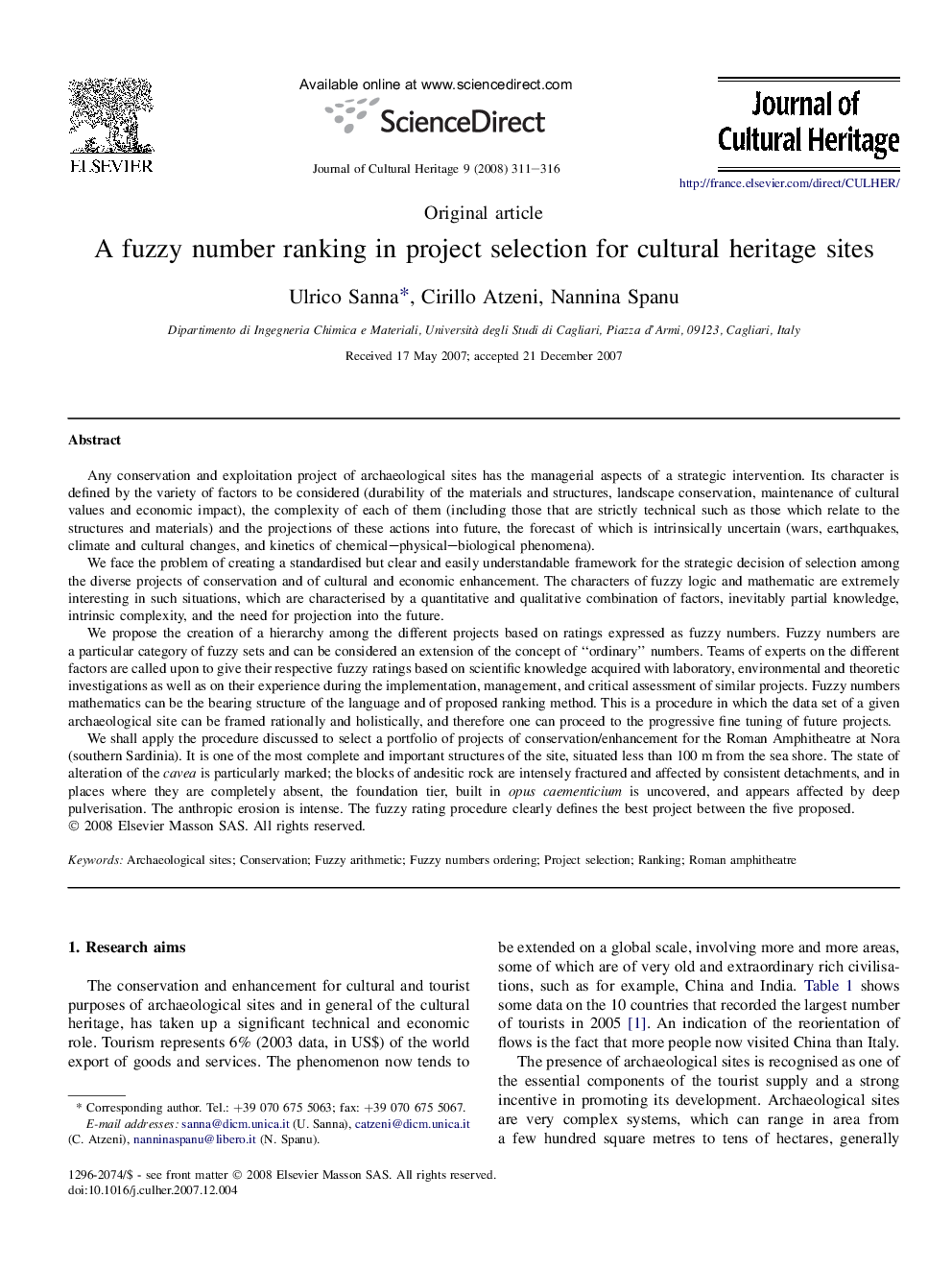| Article ID | Journal | Published Year | Pages | File Type |
|---|---|---|---|---|
| 1038739 | Journal of Cultural Heritage | 2008 | 6 Pages |
Any conservation and exploitation project of archaeological sites has the managerial aspects of a strategic intervention. Its character is defined by the variety of factors to be considered (durability of the materials and structures, landscape conservation, maintenance of cultural values and economic impact), the complexity of each of them (including those that are strictly technical such as those which relate to the structures and materials) and the projections of these actions into future, the forecast of which is intrinsically uncertain (wars, earthquakes, climate and cultural changes, and kinetics of chemical–physical–biological phenomena).We face the problem of creating a standardised but clear and easily understandable framework for the strategic decision of selection among the diverse projects of conservation and of cultural and economic enhancement. The characters of fuzzy logic and mathematic are extremely interesting in such situations, which are characterised by a quantitative and qualitative combination of factors, inevitably partial knowledge, intrinsic complexity, and the need for projection into the future.We propose the creation of a hierarchy among the different projects based on ratings expressed as fuzzy numbers. Fuzzy numbers are a particular category of fuzzy sets and can be considered an extension of the concept of “ordinary” numbers. Teams of experts on the different factors are called upon to give their respective fuzzy ratings based on scientific knowledge acquired with laboratory, environmental and theoretic investigations as well as on their experience during the implementation, management, and critical assessment of similar projects. Fuzzy numbers mathematics can be the bearing structure of the language and of proposed ranking method. This is a procedure in which the data set of a given archaeological site can be framed rationally and holistically, and therefore one can proceed to the progressive fine tuning of future projects.We shall apply the procedure discussed to select a portfolio of projects of conservation/enhancement for the Roman Amphitheatre at Nora (southern Sardinia). It is one of the most complete and important structures of the site, situated less than 100 m from the sea shore. The state of alteration of the cavea is particularly marked; the blocks of andesitic rock are intensely fractured and affected by consistent detachments, and in places where they are completely absent, the foundation tier, built in opus caementicium is uncovered, and appears affected by deep pulverisation. The anthropic erosion is intense. The fuzzy rating procedure clearly defines the best project between the five proposed.
